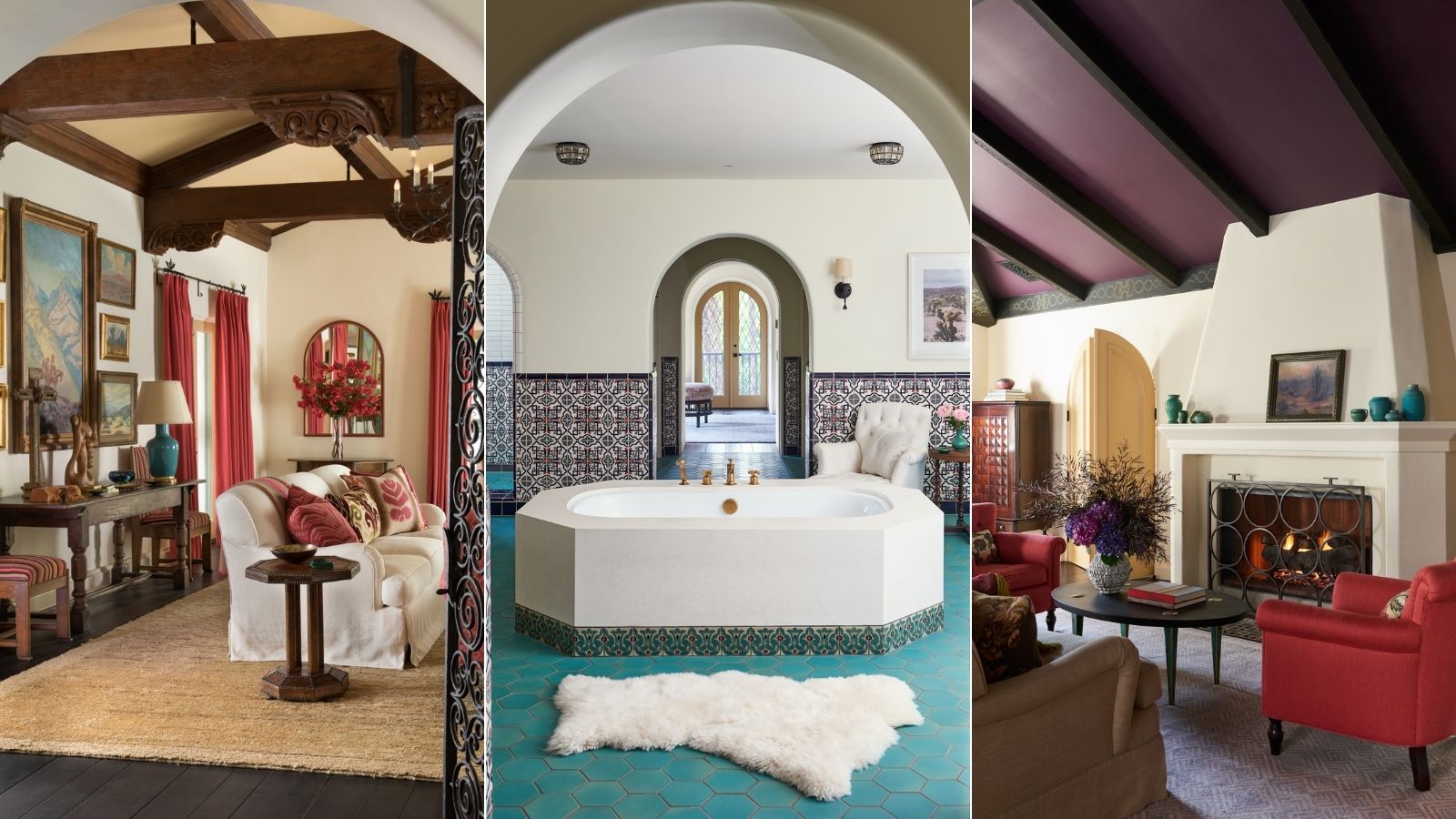
Spanish Colonial interior design is having a moment, both in homes of the style and more modern spaces. With its unique color palette and celebration of vintage style, it's no surprise it's trending in the year of eclecticism.
There are a few interior design styles that fall under Colonial in the United States, but it's Spanish Colonial that is catching people's attention. From the historic architecture to the design elements it calls for, there's plenty to be admired in these spaces.
Whether you're renovating an original property in the style or simply want to inject your home with Spanish style, we've asked interior designers for their thoughts on Spanish Colonial interior design, and how best to decorate in the style.
What is Spanish Colonial interior design?
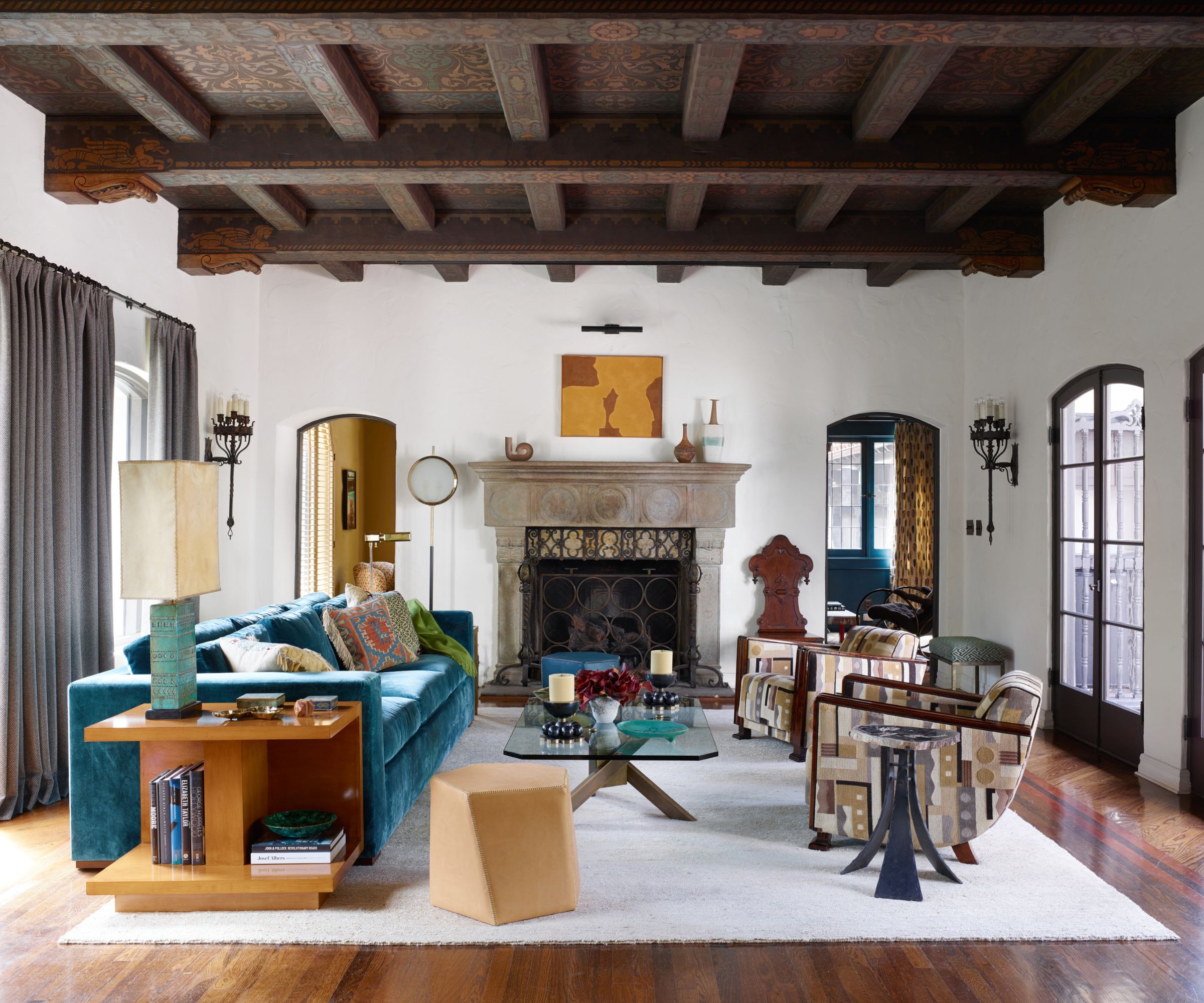
Spanish Colonial interior design is one of many Spanish house styles. Characterized by its architectural details, old meets new style and Spanish-inspired features, it's no wonder this aesthetic is proving popular.
'Spanish Colonial is a term often used to represent the Spanish architectural style that was transplanted from Spain through their colonization of the New World. The style is mostly observed as whitewashed plaster walls, ceilings of dark wood planks and rafters, floors of wood or hand-made tile, and deep-set windows with divided panes of glass,' explains interior designer Thomas Callaway.
The architectural details are key to the Spanish Colonial style, particularly dark wood beams and tall ceilings. 'Typically, Spanish Colonial interiors are filled with intricate architectural woodworking details, terracotta floors, decorative ironwork, and plaster walls. The original homes often have pitched ceilings with beams and often architectural windows and French doors,' adds Christine Markatos Lowe, founder of Markatos Design.
Throughout this style of interior, from walls and tiles to furniture and decor, intricate details feature heavily. 'Spanish Colonial interiors usually incorporate an element of ornate or intricate detail. Carved wooden furniture pieces, ornamental ironwork, intricate tile work, or painted motifs or patterns,' says Steven Johanknecht, of Commune Design.
Why is Spanish Colonial interior design popular at the moment?
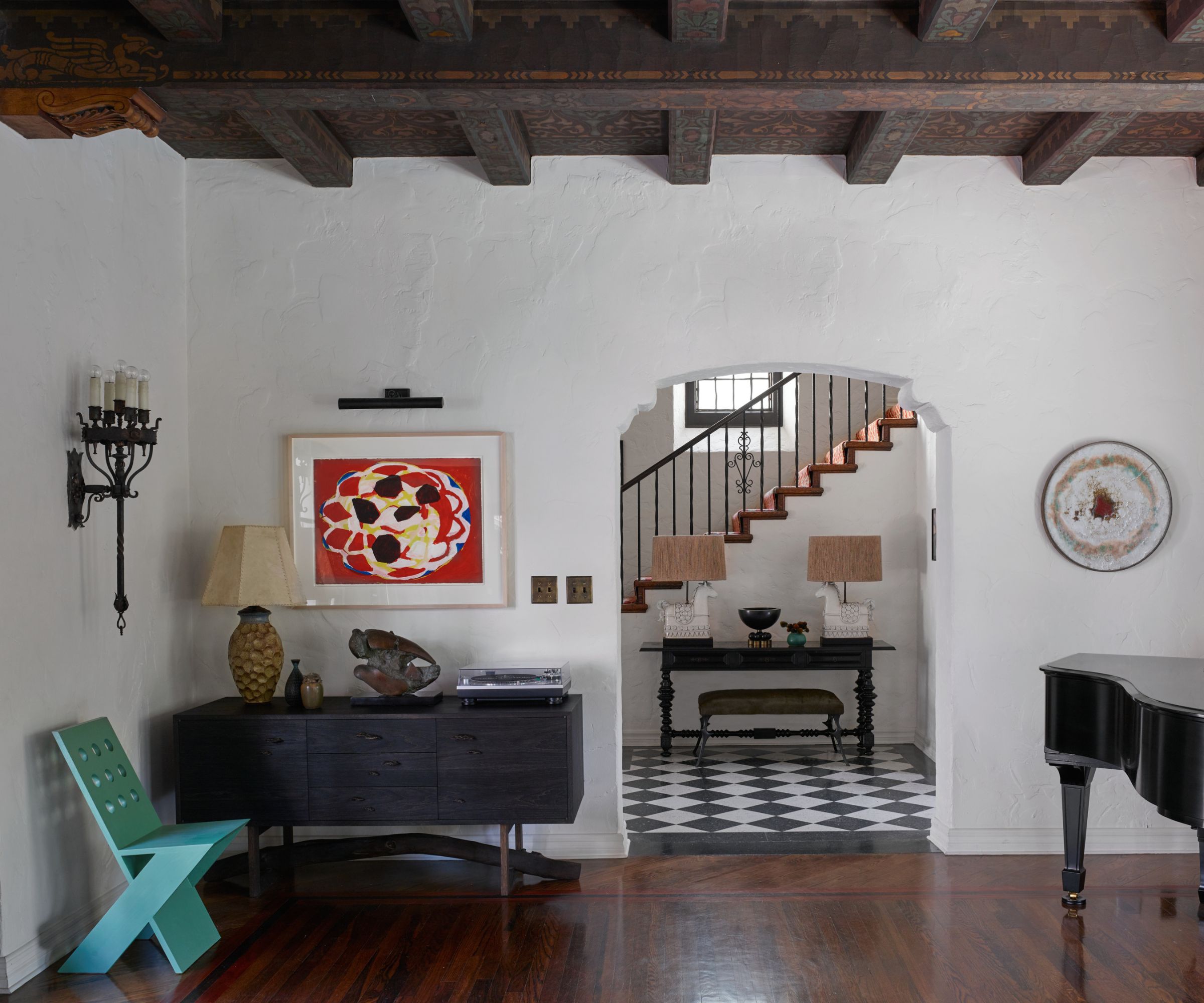
Although Spanish Colonial style is by no means an interior design trend, it is experiencing a revived appreciation. 'They’ve always been popular and never go out of style, but I think there is a particular appreciation at the moment for the comfort and collected feel of a Spanish interior,' says Steven.
Spanish Colonial homes work in tangent with the renewed interest we are seeing in vintage decor and spaces with a sense of history. This style carefully balances beautiful architecture with pieces that feel lived-in and loved, and the overall aesthetic feels truly timeless.
'All styles seem to revolve in popularity through circles of time, but there are certain places where the roots are so deep, that the place itself is defined by a style. This is true for Southern California in particular, where the idea of Santa Barbara, Monterey, or the Hollywood Hills conjures an image that people always respond to in a romantic and idealized way,' says Thomas.
'Spanish Colonial style has an undeniable sense of place and established romanticism that will forever hold a celebrated place in architectural and interior design. But NOW happens to be a moment when it is embraced in a particularly strong way,' he adds.
How to decorate with Spanish Colonial interior design
1. Pair a neutral base with dramatic pops of color
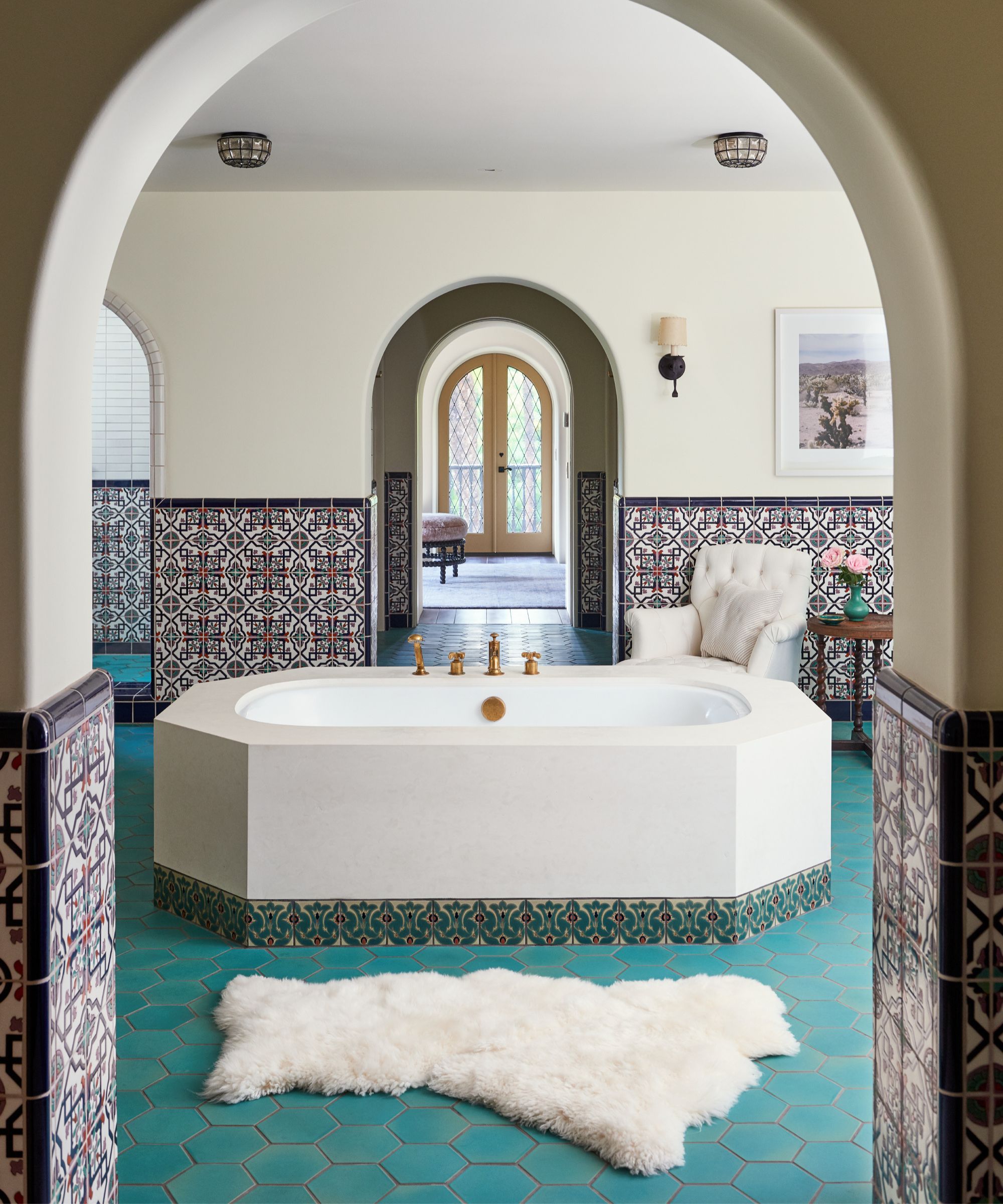
The color palette typical of Spanish Colonial interior design is what separates it from other Spanish-inspired styles. A neutral hue forms the backdrop, and more saturated hues are introduced to add depth and interest.
'Against a white or neutral backdrop, strong, simple earth colors like brown, blue, gold, and green, with occasional punches of red or black look both dramatic and comforting in a Spanish Colonial interior,' explains Thomas.
It's not just the colors used on walls and decor that are important, but the tones of different materials, too. 'The starting point of the palette is always the same – terracotta floors, warm wood tones, and creamy white plaster walls. From there we love to mix in saturated colors to pop off the plaster walls, but it also works to use a softer palette of whisper colors,' adds Christine.
2. Introduce large pieces of furniture
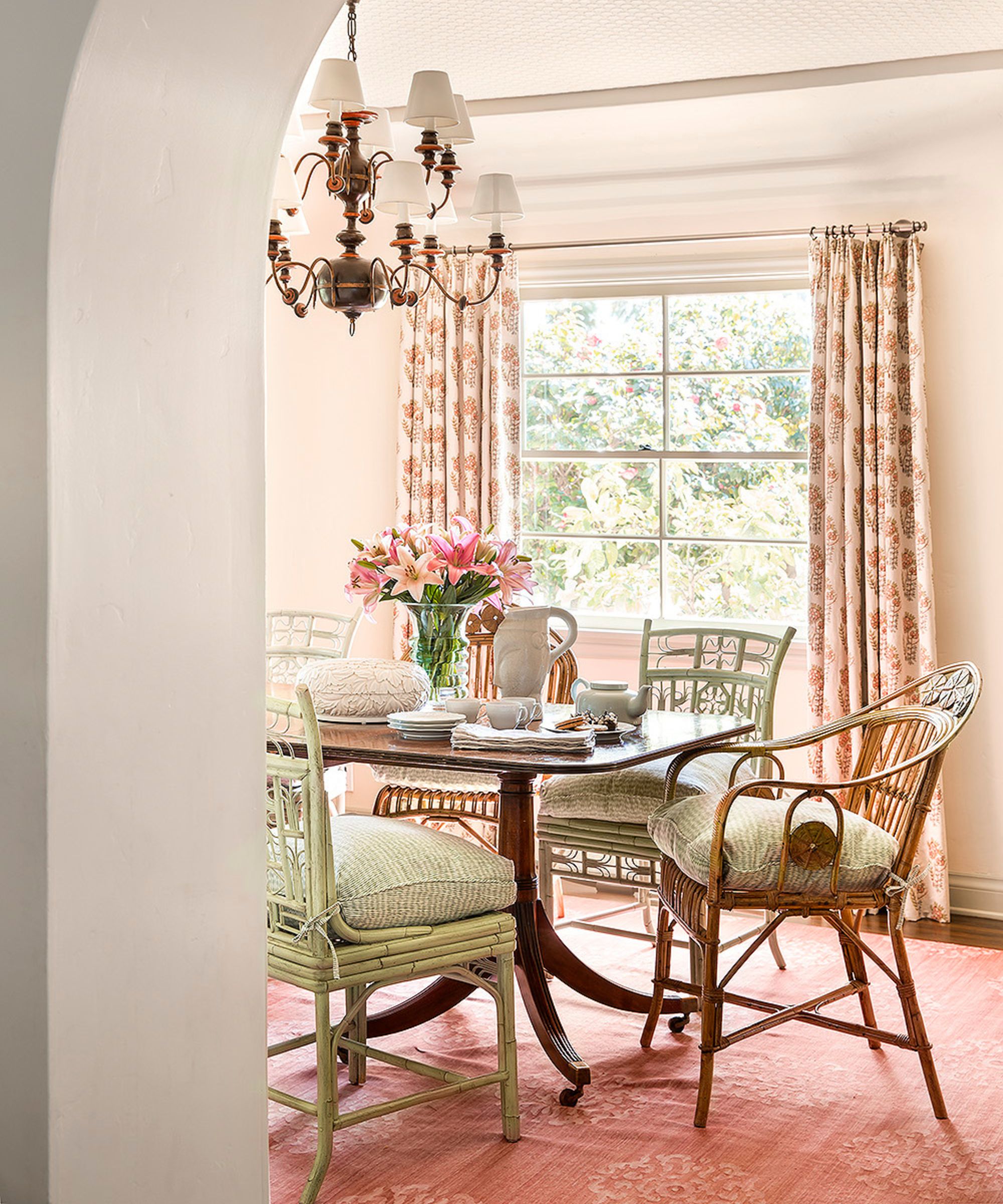
The furniture featured in Spanish Colonial homes is usually larger and more robust than what you'd find in other styles. These spaces are usually large with tall ceilings, so introducing furniture to scale is key to ensuring your furniture doesn't look lost in a room.
'Scale is usually the most important thing to pay attention to when furnishing a Spanish Colonial home. Furniture that is too delicate can feel awkward and out of place. Carved wooden furniture and larger-scale seating feel right,' says Steven.
Alongside size, the style of furniture is also important. For an authentic feel, opt for vintage pieces that feel in keeping with the home. 'There is an intrinsic bohemian look to the houses given the funkiness of the architectural styles. The aesthetic can evolve from a more formal point of view as well, but we tend to err on vintage pieces with character and printed linens as our starting points,' explains Christine.
3. Add luxurious textures
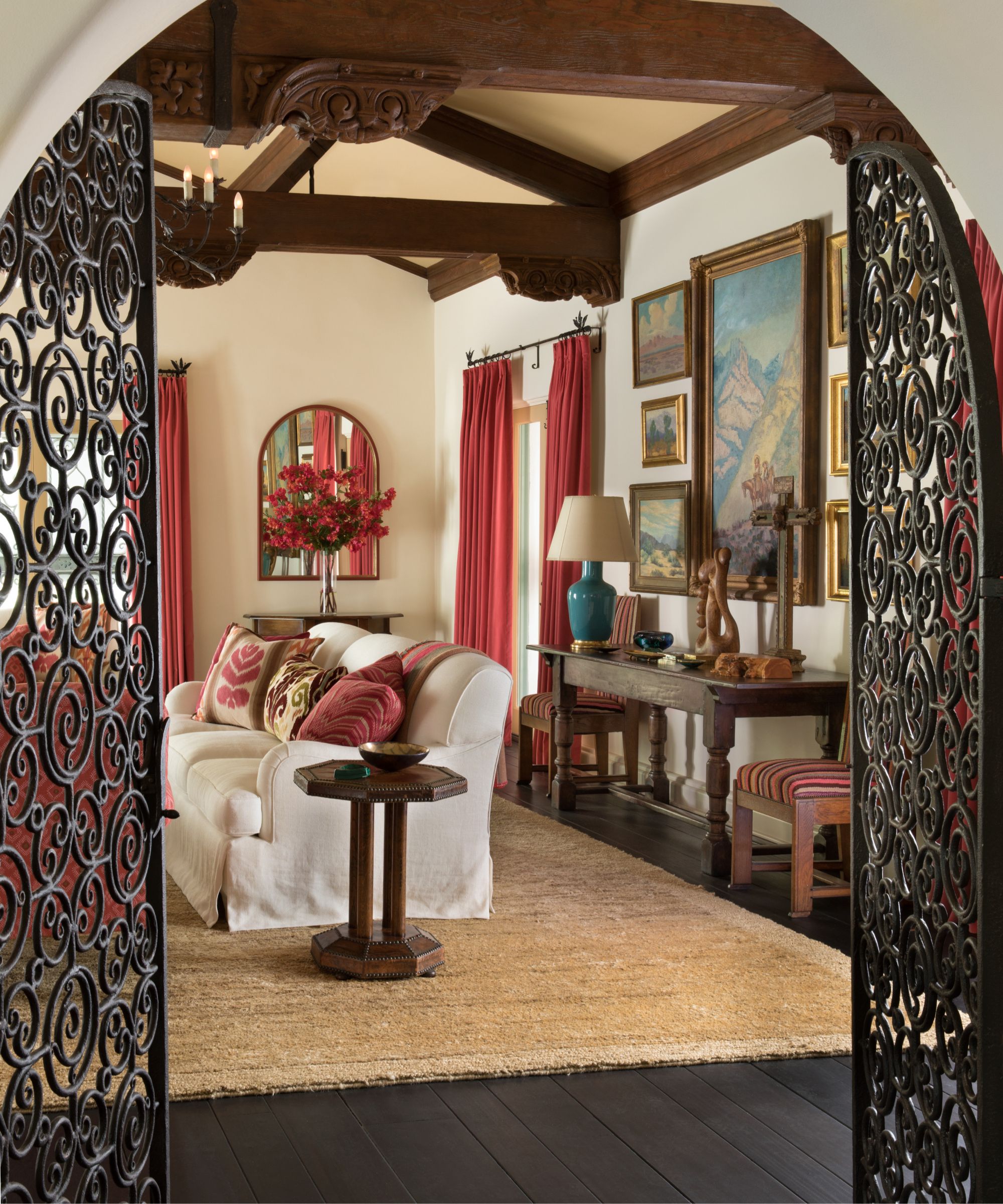
To reintroduce a sense of comfort and luxury to Spanish colonial interiors, adding the right fabrics is key. Choose textures and patterns that feel timeless, rich and hardwearing, while sticking to the color palette typical of the interior style.
'Add fabrics selected with attention to texture – mohair velvet, chunky linens, and ornate patterns all mix well together. It’s nice to incorporate the work of both current and vintage artisans,' suggests Steven.
In this living room, red curtains add a softness to the space, while a jute rug adds warmth and comfort. While a lot of wooden furniture has been introduced to the scheme, a completely upholstered sofa introduces a cozier feel to the room.
4. Decorate with a mix of old and new
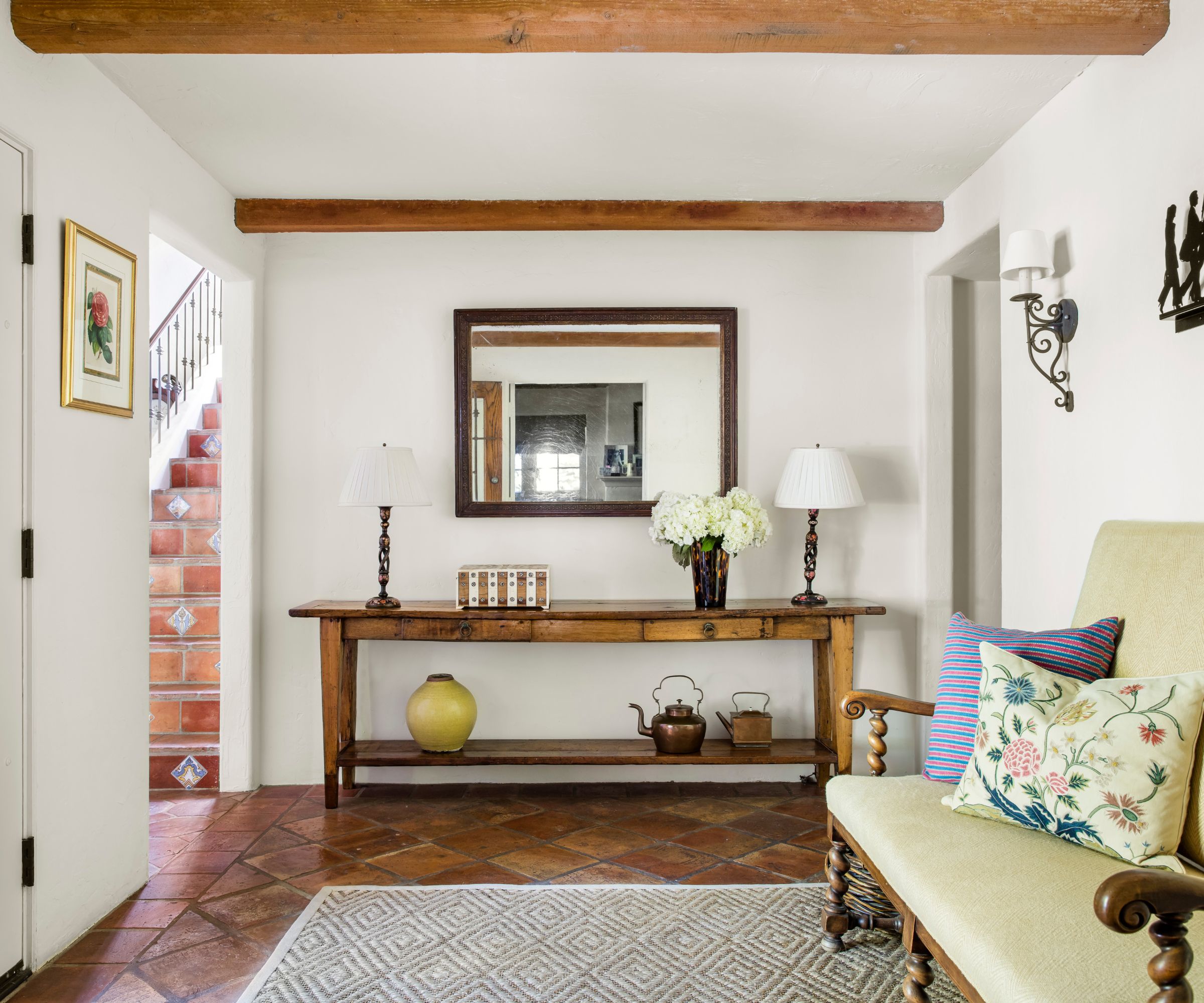
For a scheme that feels timeless but not dated, introduce a mix of vintage and contemporary decor. 'Vintage textiles and rugs, pottery, or a carved piece of furniture or bench is a great way to introduce Spanish Colonial style,' says Steven.
Consider decorating with vintage pieces where it makes sense and feels most authentic. Lighting, rugs, and ceramics are good options as you can source original examples.
'We love using vintage lighting and flatweave carpets as a starting point. Also, pulling in hand-painted tiles or vintage tiles to add character to bathrooms and fireplace surrounds is a fun way to add Spanish Colonial style to a scheme,' adds Christine.
5. Make a feature of architectural details
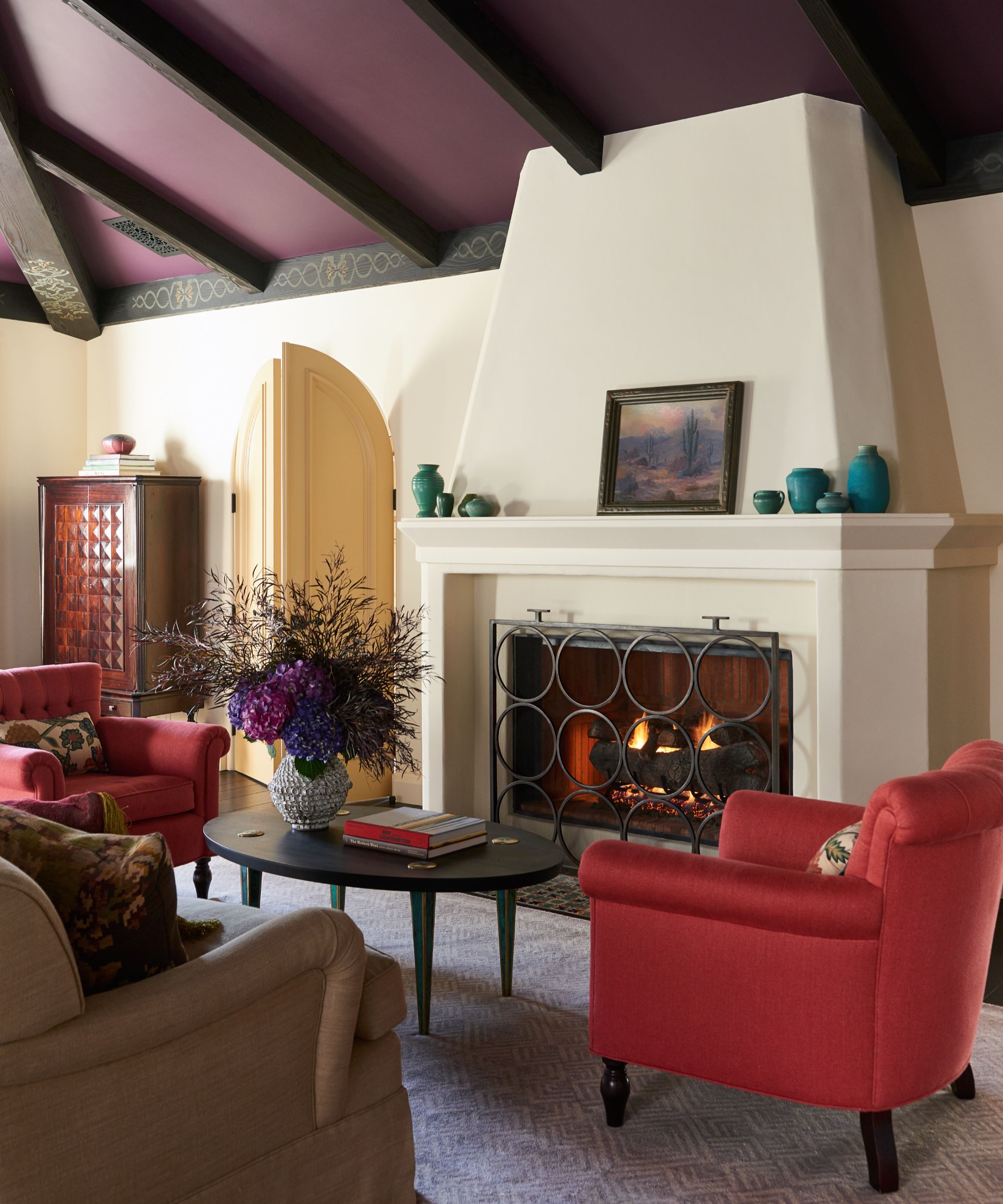
Original features such as wooden beams, fireplaces, and ornate woodwork are notable architectural details of Spanish Colonial style, so making a feature of them is key.
'I personally do not introduce this style into an interior unless the architecture or exterior skin of a project is already hinting at this style. It doesn’t need to be historically accurate, but having a strong sense of physical volumes is a requirement for me to emphasize Spanish style in an interior where it is not an obvious aesthetic choice,' says Thomas.
He adds that he looks out for features 'such as wall thickness, or potential for a high ceiling, a good fireplace, or other architectural elements that could lead to telling an interior design story with a Spanish Colonial flavor.'
Spanish Colonial interior design might be trending, but it's an incredibly timeless style. Celebrating its historic architecture and original features while introducing more contemporary elements is key to making this interior design style work today.
Whether you work with the color palette, introduce furniture of the era, or simply make original features stand out, there's plenty of fun and unique pays to introduce Spanish Colonial style to your home.







